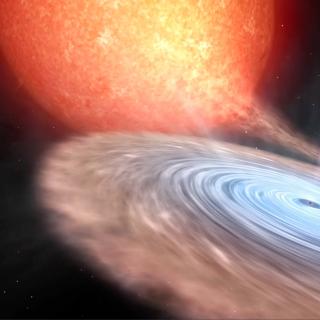Bibcode
Zucker, Catherine; Yu, Zhefu; Wideman, Zachary; Xue, Yongquan; Wen, Di; Tucker, Brad E.; Trilling, David E.; Sharp, Rob; Salvato, Mara; Ricci, Claudio; Merloni, Andrea; Mangian, Amelia; Malik, Umang; Krumpe, Mirko; Li, Jennifer I.; Lidman, Chris; Koekemoer, Anton M.; Horne, Keith; Hartigan, Patrick; Hall, Patrick B.; Golovich, Nathan; Grier, Catherine J.; Graham, Melissa L.; Fu, Jianyang; Fuentes, Cesar; Fonseca Alvarez, Gloria; Dwelly, Tom; Eltvedt, Alice; De Rosa, Gisella; Drlica-Wagner, Alex; Chen, Yu-Ching; Casares, Jorge; Burke, Colin J.; Brandt, W. N.; Bielby, Richard; Bauer, Franz E.; Assef, Roberto J.; Abbott, Timothy M. C.; Anderson, Scott F.; Martini, Paul; Liu, Xin; Li, Junyao; Stone, Zachary; Gruendl, R. A.; Friedel, Douglas N.; Adamów, Monika; Shen, Yue; Yang, Qian; Zhuang, Ming-Yang
Bibliographical reference
The Astrophysical Journal Supplement Series
Advertised on:
10
2024
Citations
4
Refereed citations
3
Description
High-quality Extragalactic Legacy-field Monitoring (HELM) is a long-term observing program that photometrically monitors several well-studied extragalactic legacy fields with the Dark Energy Camera (DECam) imager on the CTIO 4 m Blanco telescope. Since 2019 February, HELM has been monitoring regions within COSMOS, XMM-LSS, CDF-S, S-CVZ, ELAIS-S1, and SDSS Stripe 82 with few-day cadences in the (u)gri(z) bands, over a collective sky area of ∼38 deg2. The main science goal of HELM is to provide high-quality optical light curves for a large sample of active galactic nuclei (AGNs), and to build decades-long time baselines when combining past and future optical light curves in these legacy fields. These optical images and light curves will facilitate the measurements of AGN reverberation mapping lags, as well as studies of AGN variability and its dependencies on accretion properties. In addition, the time-resolved and coadded DECam photometry will enable a broad range of science applications from galaxy evolution to time-domain science. We describe the design and implementation of the program and present the first data release that includes source catalogs and the first ∼3.5 yr of light curves during 2019A–2022A.
Related projects

Black holes, neutron stars, white dwarfs and their local environment
Accreting black-holes and neutron stars in X-ray binaries provide an ideal laboratory for exploring the physics of compact objects, yielding not only confirmation of the existence of stellar mass black holes via dynamical mass measurements, but also the best opportunity for probing high-gravity environments and the physics of accretion; the most
Montserrat
Armas Padilla